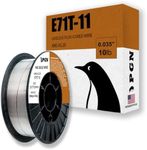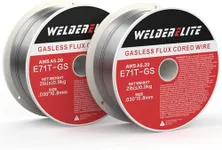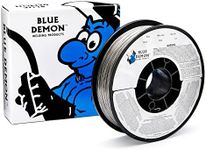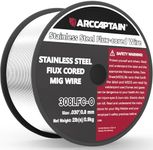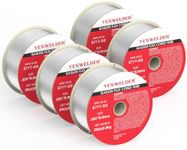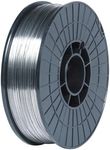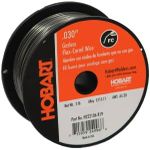We Use CookiesWe use cookies to enhance the security, performance,
functionality and for analytical and promotional activities. By continuing to browse this site you
are agreeing to our privacy policy
10 Best Flux Core Wire 2025 in the United States
From leading brands and best sellers available on the web.How do we rank products for you?
Our technology thoroughly searches through the online shopping world, reviewing hundreds of sites. We then process and analyze this information, updating in real-time to bring you the latest top-rated products. This way, you always get the best and most current options available.

Buying Guide for the Best Flux Core Wire
Choosing the right flux-core wire for your welding projects is crucial to achieving strong, clean welds. Flux-core wire is popular for its ease of use and ability to weld thicker materials without the need for a shielding gas. To make an informed decision, you need to understand the key specifications and how they relate to your specific needs. Here are the main factors to consider when selecting flux-core wire.Wire DiameterWire diameter refers to the thickness of the flux-core wire. This is important because it affects the amount of current needed and the thickness of the material you can weld. Common diameters include 0.030 inches, 0.035 inches, and 0.045 inches. Thinner wires (0.030 inches) are suitable for lighter materials and lower current settings, making them ideal for thin sheet metal and small projects. Thicker wires (0.045 inches) are better for heavy-duty welding and thicker materials, as they can handle higher currents and produce stronger welds. Choose a wire diameter that matches the thickness of the material you plan to weld and the capabilities of your welding machine.
Tensile StrengthTensile strength measures the maximum stress the welded joint can withstand before breaking. This is crucial for ensuring the durability and safety of your welds. Tensile strength is usually measured in pounds per square inch (psi). For general-purpose welding, a tensile strength of around 70,000 psi is common. Higher tensile strengths are needed for more demanding applications, such as structural welding. Consider the requirements of your project and choose a wire with an appropriate tensile strength to ensure your welds can handle the expected loads.
PolarityPolarity refers to the direction of the electrical current used in welding. Flux-core wires can be designed for either direct current electrode negative (DCEN) or direct current electrode positive (DCEP). DCEN is typically used for thinner materials and provides a smoother, more stable arc, while DCEP is better for thicker materials and deeper penetration. Check the specifications of the flux-core wire to determine the recommended polarity and ensure your welding machine can accommodate it. Choose the polarity that matches the type of welding you will be doing and the materials you will be working with.
Shielding TypeFlux-core wires can be self-shielded or gas-shielded. Self-shielded wires contain flux that generates its own shielding gas when heated, protecting the weld from contaminants. This makes them convenient for outdoor welding or in windy conditions where external shielding gas would be blown away. Gas-shielded wires require an external gas supply, such as carbon dioxide or a mix of argon and carbon dioxide, to protect the weld. These wires generally produce cleaner welds with less spatter but are less convenient for outdoor use. Choose self-shielded wire for outdoor or portable welding and gas-shielded wire for indoor projects where a cleaner weld is desired.
Weld PositionWeld position refers to the orientation of the weld joint. Flux-core wires are rated for different positions, such as flat, horizontal, vertical, and overhead. Some wires are designed for all-position welding, making them versatile for various projects. If you frequently weld in different positions, an all-position wire is a good choice. For specific applications, choose a wire rated for the position you will be welding in most often to ensure optimal performance and ease of use.
FAQ
Most Popular Categories Right Now



